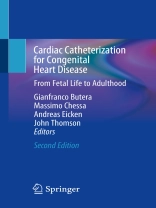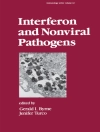The second edition of this handbook is an up-to-date guide to the application of catheter-based interventions across the entire age range of congenital heart disease patients, from fetal life through to adulthood.
It considers the changes and improvements that have occurred during the last few years in terms of new procedures, new tools and devices (in particular in the field of valves), new imaging and pre-procedural strategies, such as 3D-printing, 3D- rotational angiography and fusion imaging. It provides readers with clear instructions on techniques for vascular access, valve dilatation, angioplasty, stent implantation, defect closure, defect creation, pulmonary valve implantation and on the hybrid approach, as well as on various other procedures.
As in the first edition, topics are approached using a step-by-step format, ensuring that readers can immediately access the information relevant to their daily practice. Numerous explanatory figuresand drawings are included in each chapter in order to further clarify how to plan, perform and evaluate diagnostic and interventional procedures in the field of congenital heart disease. It also highlights important tips and tricks that will assist health operators in achieving optimal outcomes, and includes an appendix with additional general equations and BSA, and oxygen consumption charts.
This practical guide will be a valuable resource for surgeons and cardiologists in their daily clinical practice.
Daftar Isi
PART I) GENERAL 1) Informed Consent.- 2) Anaesthesiological Management of the Paediatric Patient in the Catheterisation Laboratory.- 3) Antibiotics and Anticoagulation.- 4) 4) Angiography: Basics and Contrast Media.- 5) Angiography: Standard Projections / Radiation Exposure.- 6) Catheters and Wires.- 7) Balloons.- 8) Stents.- 9) Transcatheter Valve Devices in Congenital Heart Disease.- 10) “Adult” Tools Relevant For Congenital Heart Disease.- 11) Hemodynamic Assessment: Pressures, Flow, Resistances and Vasoreactive Testing.- 12) Congenital Heart Disease: An Integrated Care Approach.- PART II) VASCULAR ACCESS 13) The Usual Vascular Access.- 14) Unusual Access.- 15) Hemostasis.- 16) Access Complications and Management.- 17) Transseptal Access.- 18) Hybrid Accesses.- PART III) FETAL PROCEDURES 19) Fetal Interventions.- PART IV) STEP-BY-STEP PROCEDURES: VALVE DILATATION 20) Aortic Valvular Stenosis.- 21) Pulmonary Valvular Stenosis.- 22) Pulmonary Atresia and Intact Venreicular Septum.- 23) Percutaneous Transcatheter Balloon Mitral Commissurotomy.- PART V) STEP-BY-STEP PROCEDURES: VESSEL TREATMENT 24) Stent Implantation in Patients with Pulmonary Arterial Stenosis.- 25) Aortic Coarctation.- 26) The Role of Transcatheter Interventions in Middle Aortic Syndrome.- 27) Reopening of Peripheral and Central Arteries and Veins.- 28) PDA Stenting in Duct-dependent Pulmonary Circulation.- 29) PDA Stenting in Duct-dependent Systemic Circulation.- PART VI) STEP-BY-STEP PROCEDURES: CLOSING OR CREATING A DEFECT 30) Step-by-step Closure of Atrial Septal Defects (ASDs).- 31) Step-by-step Device Closure of Persistent Foramen Ovale (PFO).- 32) Fontan Fenestrations Closure.- 33) Ventricular Septal Defect.- 34) Patent Ductus Arteriosus Closure.- 35) Percutaneous Closure of PDA in Premature Babies.- 36) Closure of Coronary Arterial Fistulas.- 37) Vessel Embolization: Transcatheter Embolization of Pulmonary Arteriovenous Malformations and Aortopulmonary Collateral Arteries.- 38) Closure of Residual Post-surgical Defects.- 39) ASD Closure in Special Situations: Elderly, PA-IVS.- 40) Creating an Interatrial Communication.- 41) Transcatheter Correction of the Superior Sinus Venosus ASD.- PART VII) STEP-BY-STEP PROCEDURES: VALVE IMPLANTATION 42) Melody Valve Implantation in Pulmonary Position.- 43) SAPIEN XT Valve Implantation in the Pulmonary Position.- 44) Percutaneous Tricuspid Valve Implantation.- 45) Novel Self-Expanding Pulmonary Valves and Devices.- 46) Approaches to Large or Complex Right Ventricular Outflow Tract.- PART VIII) STEP-BY-STEP PROCEDURES: PRINCIPLES OF HYBRID APPROACH 47) Hybrid Approach in Hypoplastic Left Heart Syndrome (HLHS).- 48) Hybrid Approach: Defect Closure.- 49) Hybrid Approach: Stent Implantation.- PART IX) STEP-BY-STEP PROCEDURES: MISCELLANEA 50) Retrieval Techniques.- 51) Pericardiocentesis.- 52) Endomyocardial Biopsies.- 53) Evaluations Before Partial and Total Cavopulmonary Connections.- 54) Hemodynamics in Pericardial and Myocardial Diseases.- 55) Imaging and Treating Coronary Arteries in Children.- 56) Transcatheter Treatments in PA-VSD-MAPCAs.- 57) Stenting of the Right Ventricular Outflow Tract as Initial Palliation for Fallot-Type Lesions.- PART X) IMAGING TECHNIQUES 58) The Use of 3D Rotational Angiography in Congenital Heart Disease.- 59) Intracardiac Echocardiography.- 60) Three Dimensional Transoesophageal Echocardiography in Diagnosis and Transcatheter Treatment of Congenital Cardiac Defects.- 61) 3D Mapping – Live Integration and Overlay of 3D Data from MRI and CT for Improved Guidance of Interventional Cardiac Therapy.- 62) 3D Printing and Engineering Tools Relevant to Plan a Transcatheter Procedure.- 63) Development of a Quality Improvement Culture in the Congenital Cardiac Catheterization Laboratory.- 64) Quality Improvement Tools and Risk Mitigation in the Congenital Cardiac Catheterization Laboratory.- 65) Hemodynamic Formulae, Calculations and Charts.
Tentang Penulis
Gianfranco Butera is Chief of the Department of Interventional Congenital Cardiology at Bambin Gesù Hospital IRCCS, Rome, Italy. He is Senior lecturer at King’s College University London. He has been Lead Consultant of the Department of Congenital Interventional Cardiology at St Thomas/Evelina Hospital in London. He has served as Chairman of the Interventional Cardiology Working Group of the AEPC and has been Visiting Professor at various universities including Harvard, Bordeaux, Cincinnati and Padova. His clinical and research interests are focused on interventional cardiology in children and adults with congenital heart disease. He has authored more than 230 papers in peer-reviewed journals and has edited books on interventional and fetal cardiology.
Massimo Chessa is the Head of UNICCA, The ACHD Unit of the Pediatric and Adult Congenital Heart Centre. He has been working as a Consultant in interventional cardiologist at the IRCCS-Policlinico San Donato, Milan, since his Ph D in Fetal and Pediatric intervention in CHD, in 2000. He is a Pediatrician and a Cardiologist, trained as a congenital cardiologist in Rome, Paris, and Birmingham. He is ESC, AEPC, SCAI, SICP, and SIC fellow. He served as Chairman of the ACHD WG of the AEPC, Nucleus Member of the ESC-WG in ACHD, and Treasurer of the Interventional AEPC WG. He has been President and co-Founder of AICCA, the Italian GUCH Association. Associated Editor of the Interventional Journal of Cardiology-CHD, he authored more than 200 papers in peer-reviewed journals. He is Editor of the Book series by Springer, devoted to ACHD and endorsed by the WG of the ESC and AEPC.
Andreas Eicken MD, Ph D, FESC is Head of the Catheterization Laboratory for patients with congenital heart disease (newborns to adults) at the Department of Pediatric Cardiology and Congenital Heart Disease, German Heart Centre Munich.
John Thomson is a Consultant Cardiologist specializing in interventional treatment of congenital heart disease. He has led the catheter laboratory programme at the Yorkshire heart centre in Leeds, UK for over a decade. He has performed over 4000 procedures in patients of all ages and published and lectured extensively in the field.












